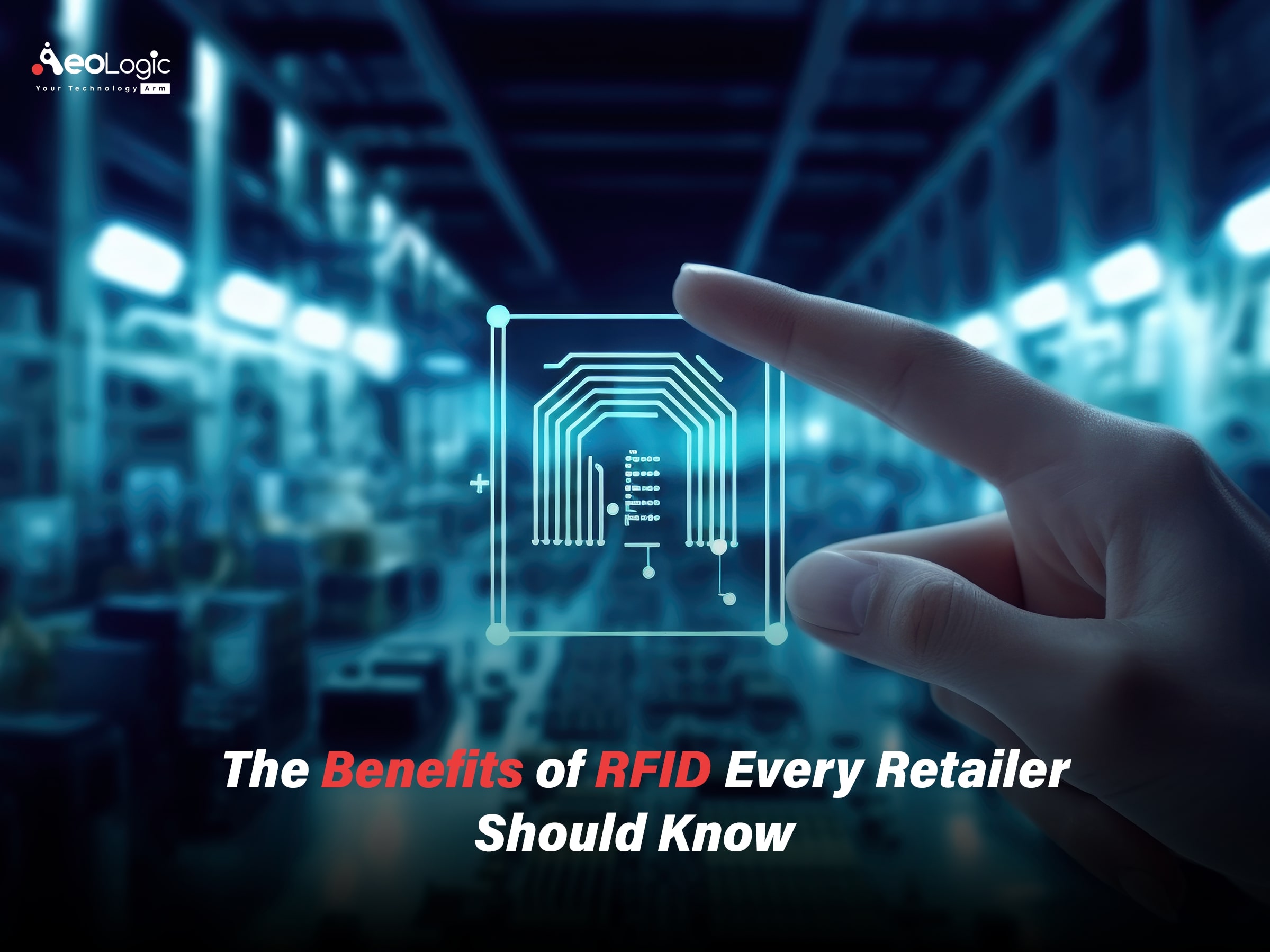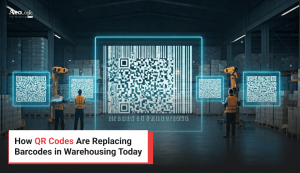If you’re still relying on traditional barcodes for inventory management or customer check-out, prepare to have your mind blown. Here’s a phrase that’s going to become your new best friend: Benefits of RFID Technology for Your Retail Business. RFID, or Radio-Frequency Identification, is a game-changer for retailers, and if you haven’t jumped on the bandwagon yet, you’re missing out. Big time.
This article delves deep into the advantages RFID brings to your retail space, and trust us, these aren’t your run-of-the-mill benefits. You’ll discover how RFID can transform your business into a streamlined, customer-friendly powerhouse.
How RFID Works: A Deeper Dive
You already have a basic understanding of the RFID process. Now let’s explore each step in greater detail. The RFID system comprises three core components: the tag, the reader, and the software backend. Understanding how these work together will illuminate the full extent of the benefits of RFID technology for your retail business.
The Tag: More Than Just a Sticker
RFID tags are not one-size-fits-all; they come in different types tailored to various uses. Passive tags are powered by the reader’s signal and are great for tracking items within a limited range. Active tags have their own battery, which allows for real-time tracking over larger distances. There’s also a hybrid type called semi-passive tags, which use a battery to run the chip’s circuitry but rely on the reader for signal power.
The Reader: The Powerhouse of Information
RFID readers are the devices that emit the radio waves to communicate with the tags. Depending on the system, these readers can be stationary, portable, or even embedded in other devices like gates or kiosks. They send out a signal, which gets picked up by any tag within range. Some advanced systems allow the reader to filter data and forward only relevant information to the backend system.
Do you know? Benefit Analysis of RFID Library Solutions
Signal Pick-Up and Data Transmission: The Magic Happens
Once a tag is within the reader’s range, it captures the signal and activates. In the case of passive tags, this activation powers up the chip, which then transmits the stored information back to the reader. This information often includes unique identifiers, product details, and sometimes even sensor data like temperature or humidity.
The Backend Software: Where Data Becomes Insight
After receiving data from the tags, the reader sends this information to the backend software, where the real magic happens. This software interprets the raw data, converting it into actionable insights. It’s this backend system that enables the myriad benefits of RFID technology for your retail business. From inventory tracking to customer analytics, the software can be tailored to meet specific retail needs.
Important Technical Table
| Component | Function | Types |
|---|---|---|
| Tag | Stores information about the item and communicates with the reader | Passive, Active, Semi-Passive |
| Reader | Sends out signals to detect and communicate with tags | Stationary, Portable |
| Backend Software | Interprets the data from the reader and converts it into actionable insights | Inventory, Analytics, Others |
By understanding the in-depth mechanics of how RFID works, you can better appreciate its utility. Whether it’s real-time inventory updates, theft prevention, or improving customer experiences, the functionality of each component plays a vital role in delivering the full spectrum of benefits for your retail operation.
Also Read: How RFID Tagging Solutions for Ammunition Will Help the Soldiers
7 Benefits of RFID Technology for Your Retail Business
1. Speedy Checkouts
Say goodbye to long lines. RFID enables the rapid processing of multiple items simultaneously. This not only reduces wait times but also enhances the overall customer experience. A speedy checkout process boosts customer satisfaction and leaves a lasting impression. This, in turn, increases the chances of repeat visits and long-term customer loyalty.
2. Accurate Inventory Management
No more stockouts or overstocks. Real-time tracking means you know what you have and where it is at all times. With RFID, you can keep tabs on your entire supply chain, from the warehouse to the retail shelf. This level of accuracy ensures that you’re able to meet customer demand more effectively. When inventory is managed well, you free up capital for other critical aspects of your business, like marketing or expansion.
3. Enhanced Customer Experience
With RFID, customer service becomes streamlined and efficient, resulting in satisfied customers and increased sales. Associates equipped with RFID technology can answer customer queries with confidence and precision, eliminating the need for guesswork. Real-time data can also be leveraged to personalize customer interactions, recommend products based on shopping behavior, and even offer special deals to frequent shoppers.
4. Loss Prevention
Combat theft effectively with instant alerts on any unauthorized movement of items. With RFID tags, items are tracked in real-time, providing a robust anti-shoplifting mechanism. If a tagged item exits the store without being checked out, alarms are triggered, alerting the staff immediately. This proactive approach to loss prevention can result in substantial savings and protect your bottom line.
| Benefit | How It Helps |
|---|---|
| Speedy Checkouts | Reduces customer waiting time |
| Accurate Inventory Management | Eliminates overstocking and understocking |
| Enhanced Customer Experience | Provides real-time data for better customer service |
| Loss Prevention | Enables theft alerts |
5. Reduced Labor Costs
Automated systems mean less manual work, leading to significant labor cost reductions. Imagine conducting a full inventory audit without requiring additional labor or hours of manual counting. This also minimizes human error, ensuring that your inventory data is more reliable. The time saved can be redirected to focus on customer service and other important operational aspects.
6. Optimized Store Layout
Use RFID data to understand customer movements and optimize store layouts for maximum engagement and sales. By tracking which areas of the store customers frequent, you can strategically place high-margin products in those zones. Furthermore, RFID data can help you identify underutilized areas of your store, enabling you to make necessary adjustments to improve foot traffic and sales throughout the space.
7. Data-Driven Decisions
The data collected through RFID can help you make more informed decisions regarding stocking, store hours, and promotions. With precise, real-time data, you can also evaluate the performance of marketing campaigns or seasonal sales, adjusting your strategies as needed. You can measure which products are the most popular and at what times, providing actionable insights that can drive strategic planning and resource allocation.
Also Read: Benefits of RFID in Asset Tracking Management for the Navy
Final Thought
While RFID technology offers numerous advantages, the initial setup cost and training requirements are aspects to consider. However, the long-term gains significantly outweigh these initial investments.
So, are you ready to take your retail business to the next level? With the benefits of RFID technology for your retail business, you’re well-equipped to make an informed decision. Take the plunge; the future is indeed radio-tagged.
If you’re looking to make a change that propels you into the future of retail, there’s no better partner than Aeologic Technologies. We specialize in digital transformation and can guide you through the entire process, ensuring you realize all the benefits RFID technology has to offer. Let Aeologic Technologies be your navigator on this exciting journey to retail innovation.








